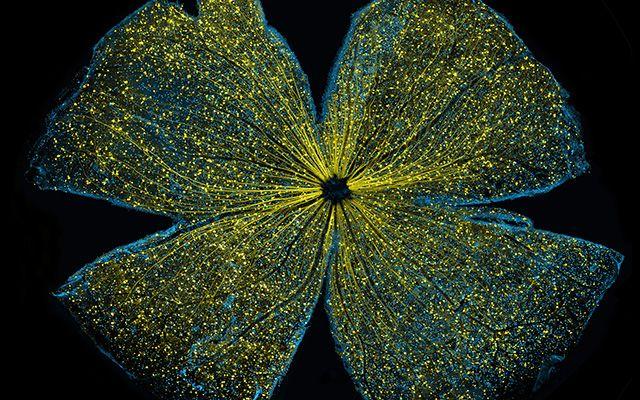In mouse studies, a ‘methylation clock’ on the ELOVL2 gene ticks toward impaired vision, but when gene expression was boosted, age-related visual function improved

Credit: Image courtesy of Keunyoung Kim, Wonkyu Ju and Mark Ellisman, all of the National Center for Microscopy and Imaging Research at UC San Diego.
A lengthy-named gene called Elongation of Very Long Chain Fatty Acids Protein 2 or ELOVL2 is an established biomarker of age. In a new paper, published online January 14, 2020 in the journal Aging Cell, researchers at University of California San Diego School of Medicine say the gene appears to play a key role in age-associated functional and anatomical aging in vivo in mouse retinas, a finding that has direct relevance to age-related eye diseases.
Specifically, the research team, led by senior author Dorota Skowronska-Krawczyk, PhD, assistant professor in the Viterbi Family Department of Ophthalmology at UC San Diego Shiley Eye Institute, found that an age-related decrease in ELOVL2 gene expression was associated with increased DNA methylation of its promoter. Methylation is a simple biochemical process in which groups of carbon and hydrogen atoms are transferred from one substance to another. In the case of DNA, methylation of regulatory regions negatively impacts expression of the gene.
When researchers reversed hypermethylation in vivo, they boosted ELOVL2 expression and rescued age-related decline in visual function in mice. “These findings indicate that ELOVL2 actively regulates aging in mouse retina, provides a molecular link between polyunsaturated fatty acids elongation and visual functions, and suggests novel therapeutic strategies for treatment of age-related eye diseases,” wrote the authors.
ELOVL2 is involved in production of long-chain omega-3 and omega-6 polyunsaturated fatty acids, which are used in several crucial biological functions, such as energy production, inflammation response and maintenance of cell membrane integrity. The gene is found in humans as well as mice.
In particular, ELOVL2 regulates levels of docosahexaenoic acid or DHA, a polyunsaturated omega-3 fatty acid abundantly found in the brain and retina. DHA is associated with a number of beneficial effects. Notably, its presence in photoreceptors in eyes promotes healthy retinal function, protects against damage from bright light or oxidative stress and has been linked to improving a variety of vision conditions, from age-related macular (AMD) degeneration to diabetic eye disease and dry eyes.
Skowronska-Krawczyk said the work demonstrated for the first time that a “methylation clock” gene had a functional role in the aging of an organ. In this case, the eye. DNA methylation is used throughout the human body, essentially turning biological switches on an off to maximize efficient operation. It has key regulatory roles in the body’s cardiovascular, neurological, reproductive and detoxification systems.
In recent years, there has been much work and progress in identifying possible biomarkers that predict the biological age (not chronological) of individuals. Such biomarkers would be useful in identifying risk and status of age-related diseases. ELOVL2 is among the genes attracting greatest interest.
“I have been asked whether I think ELOVL2 is the aging gene,” said Skowronska-Krawczyk. “After thinking about it, it is not unreasonable to think that lower ELOVL2 expression might be at the basis for many age-related conditions. Future work in our lab will address that question.”
Co-authors of this study include: co-first authors Daniel Chen and Daniel Chao as well as Lorena Rocha, Viet Ahn Nguyen Huu, Michal Krawczyk, Manish Dasyani, Tina Wang, Maryam Jafari, Mary Jabari, Kevin D. Ross, Bruce Hamilton, and Kang Zhang, all at UC San Diego; and Matthew Kolar and Alan Saghatelian, Salk Institute for Biological Studies.
###
Disclosure: In February 2019, a patent was licensed from UC San Diego to Visgenx, a startup company focused on developing new treatments for dry AMD. Skowronska-Krawczyk and Daniel Chao, MD, PhD, assistant clinical professor of ophthalmology and co-first author of the study, are co-founders and have equity interest. Chao is also a consultant. The company is developing therapeutics for dry AMD exploiting an approach described in the latest paper.
Media Contact
Scott LaFee
[email protected]
858-249-0456
Related Journal Article
http://dx.




